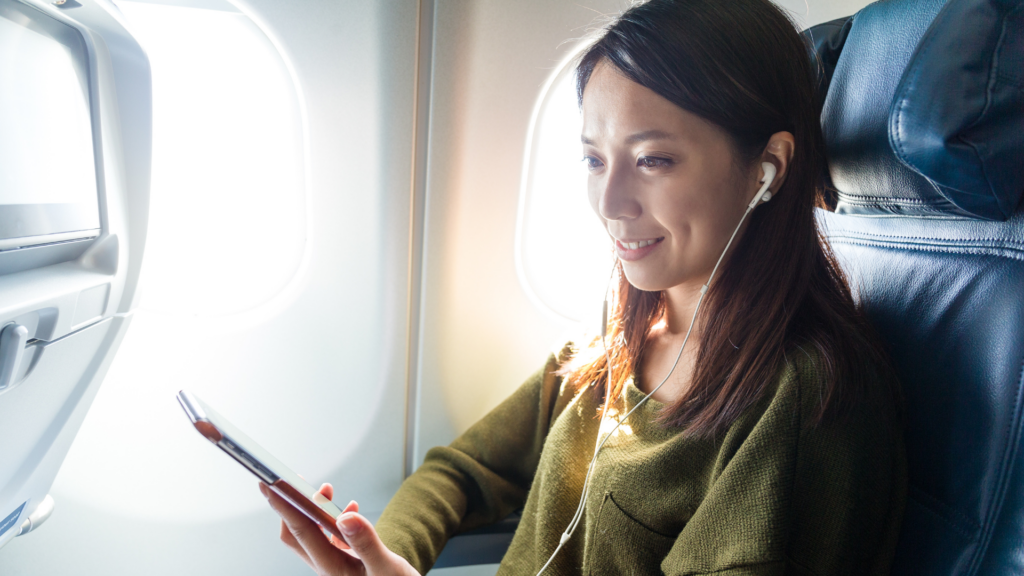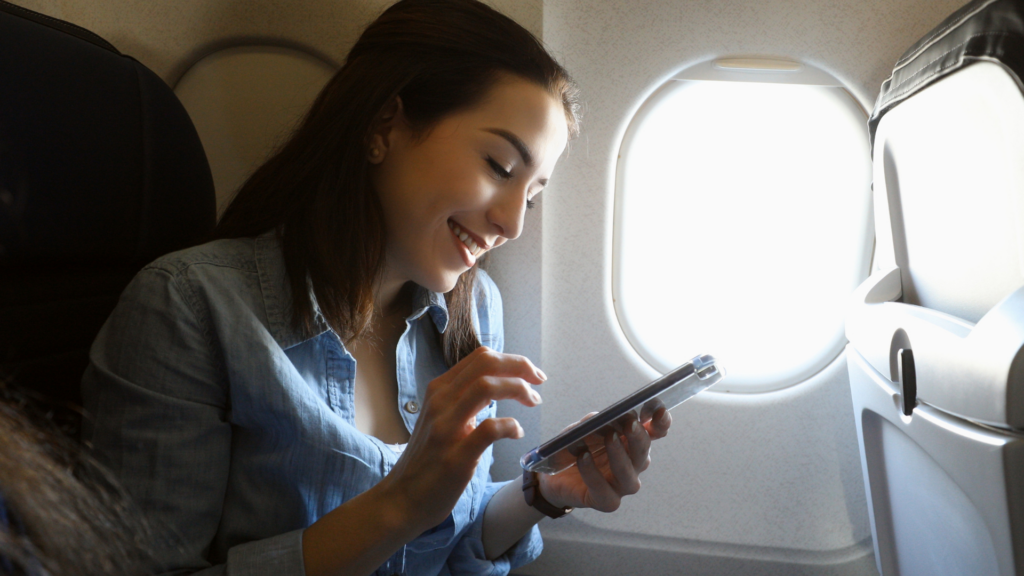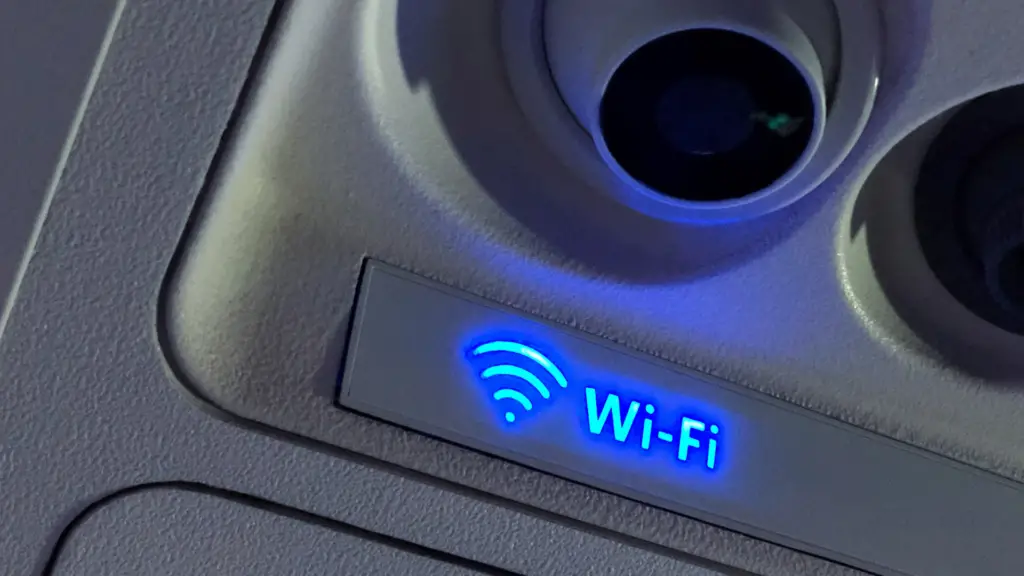Does Zoom Work on Airplane Wi-Fi?

As our work and personal lives become more digitally connected, the need for constant connectivity, even while flying, has grown. Video conferencing tools like Zoom have become integral to this interconnected lifestyle. A frequently asked question is, “Does Zoom work on airplane Wi-Fi?”
This article aims to explore this query in depth, discussing factors such as the quality of in-flight Wi-Fi, the cost of accessing it, specific airline policies, and steps to ensure a smooth Zoom meeting experience while flying.
Does Zoom Work on Airplane Wi-Fi?

Yes, Zoom can be used on airplane Wi-Fi, but the performance and quality of the meeting can vary greatly based on numerous factors. These factors include the quality of the airplane’s Wi-Fi service, the number of users connected to the network, and even the specific flight path and altitude.
Zoom is a relatively bandwidth-efficient video conferencing tool, requiring approximately 1.0 Mbps for high-quality audio and video calls. However, in-flight Wi-Fi typically relies on satellite connections, which can be slower and less stable compared to ground-based internet. As a result, your Zoom meeting might experience interruptions, lower video quality, or lagging.
On many flights, Wi-Fi is good enough for sending emails and browsing the web, but it may not be sufficient for streaming video or conducting video calls without issues. Some airlines offer enhanced in-flight Wi-Fi services that may better support Zoom, but this is typically at a higher cost.
Understanding Airplane Wi-Fi

How Does Airplane Wi-Fi Work?
Understanding whether Zoom works effectively on airplane Wi-Fi first requires knowledge of how in-flight Wi-Fi functions.
Air-to-Ground (ATG) Systems: Similar to how your mobile phone connects to cell towers, ATG systems work by connecting to ground-based cell towers. The aircraft is fitted with antennas that send and receive signals to these towers as the plane moves across the sky. However, these systems may face limitations over oceans or remote areas where towers are sparse.
Satellite Systems: These systems connect to the internet via satellites orbiting the Earth. The aircraft is equipped with an antenna on its upper surface that communicates with the nearest satellite in a network that covers most parts of the world. The signal is then relayed back down to an earth station, which connects to the internet. These systems offer a more comprehensive coverage than ATG but can be affected by weather conditions and the satellite’s position.
Wi-Fi Network Inside the Plane: Whichever system is used to connect to the internet, the Wi-Fi signal inside the plane is distributed much like it is in a home or office. Wireless access points installed throughout the cabin create a Wi-Fi network to which passengers can connect their devices.
The speed and reliability of the in-flight Wi-Fi will depend on various factors, including the technology used, the number of connected users, and the bandwidth available. These factors, in turn, can impact the quality of a Zoom call conducted via airplane Wi-Fi.
Limitations of Airplane Wi-Fi
While convenient, airplane Wi-Fi is not as fast or reliable as your home network. Bandwidth is limited, and connection speeds can be affected by factors like the number of users, the plane’s altitude, and even weather conditions.
The Basic Requirements for Zoom on a Flight
To use Zoom or any other video conferencing software on a flight, there are several basic requirements that need to be met. They include:
1. A Device with Zoom Application: Whether it’s a smartphone, tablet, or laptop, ensure that you have a device that can run the Zoom app. The application is available for iOS, Android, Windows, and macOS. Before boarding the flight, download and install the latest version of Zoom to ensure optimal performance.
2. Stable Internet Connection: For a smooth video conference experience, a stable internet connection is crucial. Airplane Wi-Fi can be a bit unpredictable due to its bandwidth limitations and the fact that it relies on satellite connections. The internet speed and bandwidth provided by the airline’s in-flight Wi-Fi service should be sufficient to run a Zoom meeting, though the quality of the connection can vary greatly between airlines and flights.
3. Power Source: Video conferencing tends to consume significant battery power, so it’s important to ensure your device has enough charge for the duration of the meeting. Many modern airplanes have power outlets at the seats, so make sure you carry your device charger to keep it powered during the flight. Alternatively, having a fully-charged power bank can be a lifesaver.
4. Headphones: To maintain a quiet environment for other passengers and to keep your meeting private, headphones are recommended when participating in a Zoom call on a flight. Noise-cancelling headphones can be particularly useful in the noisy airplane environment.
5. Subscription to In-Flight Wi-Fi: Lastly, to use Zoom on an airplane, you need to subscribe to the in-flight Wi-Fi service offered by the airline. The cost and availability of this service can vary greatly between airlines.
By ensuring these basic requirements, you can increase your chances of having a successful Zoom meeting while on a flight. Remember that using Zoom on airplane Wi-Fi may not provide the same quality and stability as a ground-based internet connection, but with the right preparation, it can still be an effective communication solution when you’re on the move.
The Cost Factor: Zoom and In-flight Wi-Fi Pricing
One key consideration when planning to use Zoom on a flight is the cost associated with in-flight Wi-Fi. The pricing strategies for in-flight Wi-Fi can vary greatly among airlines. Some offer complimentary Wi-Fi for basic web browsing but charge for streaming or larger data packages, while others charge a flat rate for the duration of the flight. Here is a brief overview:
1. Delta Airlines: Delta offers a range of Wi-Fi passes starting from hourly rates to full day passes, with prices starting from $16 for domestic flights. International flight Wi-Fi prices can be higher. Sometimes, they offer Wi-Fi bundles for frequent flyers or business class passengers.
2. Emirates: Emirates offers different Wi-Fi plans to meet various communication needs. For text-based chats via popular messaging apps, there’s the “Unlimited Chat” plan, priced between $2.99 and $5.99 based on flight duration. For using Zoom, you’ll need full-flight Wi-Fi access, which ranges from $9.99 to $19.99, dependent on the flight length. A special “Easy Connect” package is also available in select regions, providing 30 minutes of unlimited data usage for $9.99.
3. American Airlines: For flights within North America, Wi-Fi typically costs $10 per flight.
4. Lufthansa: Wi-Fi on Lufthansa flights is charged based on the duration of use, with prices starting from €9 for one hour, €14 for four hours, and €17 for the entire flight.
5. JetBlue: One of the standout features of JetBlue is that it offers complimentary high-speed Wi-Fi, known as Fly-Fi, on all of its flights, which is a great advantage if you’re planning to Zoom during your flight.
6. Singapore Airlines: Singapore Airlines provides free unlimited Wi-Fi to passengers in higher classes and PPS Club members. KrisFlyer members in Economy and Premium Economy receive a complimentary Surf session. If you need to purchase Wi-Fi, options include a 1-hour plan for $3.99, a 3-hour plan for $8.99, or full-flight access for $15.99. These plans are specific to each flight sector and prices may change, so always check for current rates.
Steps to Use Zoom on Airplane Wi-Fi
Conducting a Zoom meeting on a flight involves a few extra steps than doing so from a traditional location. Here are the general steps to use Zoom on airplane Wi-Fi:
1. Prepare Before Your Flight: Before you board the flight, ensure that the Zoom app is downloaded and updated on your device. Sign in to your Zoom account to confirm that your credentials are working. Also, charge your device fully and carry your charger or a power bank if possible.
2. Connect to the In-flight Wi-Fi: Once the airplane reaches cruising altitude and the flight crew gives the go-ahead to use electronic devices, you can start connecting to the in-flight Wi-Fi. This usually involves turning on Wi-Fi on your device, selecting the airplane’s Wi-Fi network, and following the prompts to sign up or log in.
3. Purchase a Wi-Fi Plan: After connecting to the Wi-Fi network, you’ll typically be directed to a portal where you can select and purchase a Wi-Fi plan. Consider choosing a plan that provides enough data for your Zoom meeting.
4. Join or Start Your Zoom Meeting: Once you’re connected to the internet, open the Zoom app and join or start your meeting as you usually would. Remember to use headphones to avoid disturbing other passengers.
5. Optimize Your Zoom Settings: Given the limited bandwidth on airplane Wi-Fi, you may need to adjust some settings for optimal performance. This could include turning off your video, closing other apps or tabs to free up bandwidth, and asking others to do the same if possible.
6. End Your Meeting and Disconnect: After your Zoom meeting is finished, you can disconnect from the Wi-Fi network to conserve data if you’re on a limited plan. Remember to end your Zoom meeting properly to ensure all data is saved correctly.
Remember, patience is key when using Zoom on airplane Wi-Fi. You may experience slower speeds and occasional connectivity issues, so it’s best to keep your expectations realistic. If you’re hosting a critical meeting, you might want to inform participants of your situation in case there are any connection problems.
Privacy Considerations When Using Zoom on Airplane Wi-Fi
While using Zoom on airplane Wi-Fi can be convenient, it also comes with potential privacy considerations. Public Wi-Fi networks, including those provided on airplanes, may pose certain security risks, so it’s essential to be aware of them and take steps to protect your privacy.
1. Use of Public Wi-Fi: Airplane Wi-Fi is essentially a public network, and as with any public Wi-Fi, there’s a potential risk of data interception. To mitigate this risk, ensure all your online activities are conducted over encrypted connections. For example, check that websites use HTTPS rather than HTTP. Zoom calls are encrypted, providing an added layer of security.
2. Privacy on the Plane: When you’re video conferencing in a public space like an airplane cabin, consider your visual and audio privacy. Use headphones to ensure others can’t hear your conversation. Be aware of your screen’s visibility to neighbors, and avoid sharing sensitive information on screen.
3. VPNs and Additional Security Measures: If you are dealing with sensitive information on your Zoom call, consider using a Virtual Private Network (VPN). A VPN can provide an additional layer of security by encrypting all of your internet traffic.
4. Beware of Phishing Attempts: Be vigilant about any suspicious pop-ups or emails you might receive while connected to the airplane’s Wi-Fi. Cybercriminals can use public networks to carry out phishing attacks, so avoid clicking on any links or providing personal information unless you’re sure of the source.
5. Use of Cookies and Personal Data: Some in-flight Wi-Fi providers may use cookies or collect personal data as you browse. If this is a concern, consider using a privacy-oriented browser, browser extensions that block tracking, or surfing in incognito mode. Also, review the airline’s privacy policy to understand how your data is handled.





